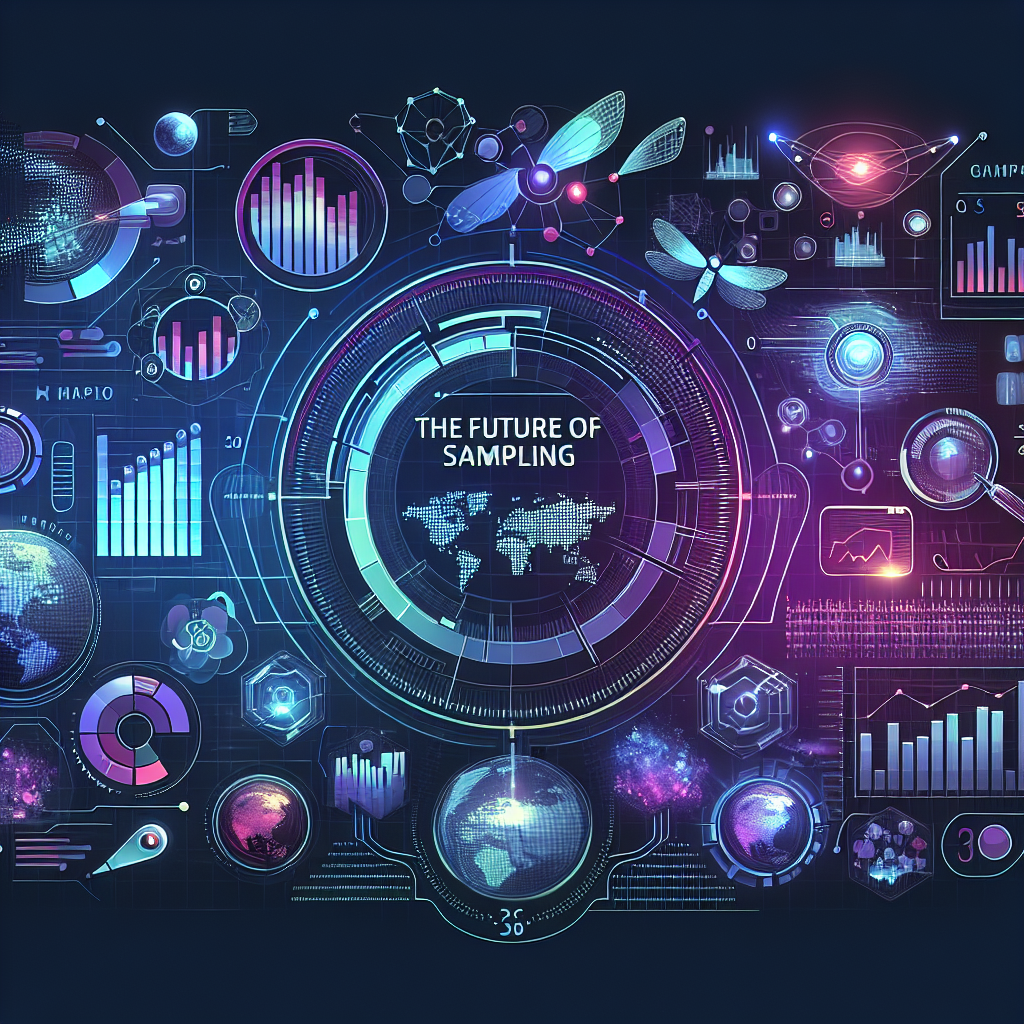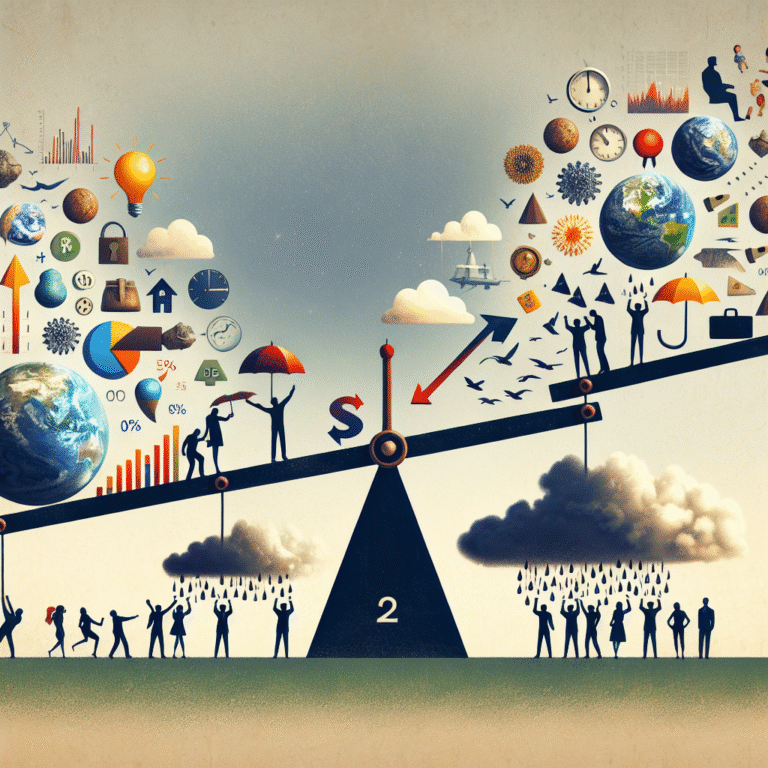
Introduction: A New Era of Insight
In a world inundated with data, the methods we use to gather and interpret that data are more crucial than ever. As industries race to keep pace with evolving consumer demands and technological advancements, the future of sampling is not just a topic of interest; it’s a necessity. When we explore The Future of Sampling: Innovations in Data Collection Methods, we uncover a realm bursting with potential — from AI-driven sampling techniques to the integration of real-time data streams. How will these innovations shape our understanding of consumer behavior and market trends? Let’s dive in.
The Evolution of Sampling Techniques
From Traditional to Digital: A Historical Lens
Sampling methods have come a long way since the days of postal surveys and cold calls. Initially, these methods relied heavily on manual processes and were often plagued by biases and inaccuracies. However, as we venture into The Future of Sampling: Innovations in Data Collection Methods, it’s essential to recognize that technological globalization and the digital age have brought about unparalleled changes.
Case Study: The Shift to Online Panels
A prime example of this shift can be seen in the rise of online panels. Companies like SurveyMonkey and Qualtrics have transformed how businesses gather consumer opinions, providing instant access to feedback from a global audience. These platforms not only reduce time and costs but also increase the reliability of data through diversified samples. The relevance here lies in their ability to adapt — as consumer needs evolve, so do these innovative platforms.
Table 1: A Comparison of Traditional vs. Online Sampling Methods
| Aspect | Traditional Methods | Online Sampling Methods |
|---|---|---|
| Cost | Higher | Lower |
| Time for Data Collection | Longer | Instant |
| Response Rates | Variable | Higher |
| Sample Diversity | Limited | Wide-ranging |
| Accessibility | Restricted | Global |
Harnessing Technology: The Role of Artificial Intelligence
AI-Powered Sampling
As we delve deeper into The Future of Sampling: Innovations in Data Collection Methods, one cannot overlook the impact of Artificial Intelligence (AI) on the sampling landscape. AI algorithms can analyze vast datasets quickly, identifying patterns and trends that were once obscure.
Case Study: Predictive Analytics in Marketing
Consider Netflix, which leverages AI not only to recommend shows but also to perform predictive analytics for user engagement. By sampling viewing habits and preferences, Netflix can tailor its offerings, ultimately enhancing viewer satisfaction. This real-world application highlights how AI is revolutionizing sampling methods, making them more efficient and effective.
Real-Time Data Collection: The Power of Continuous Insight
Understanding Continuous Sampling
Continuous data collection represents another groundbreaking innovation in sampling techniques. Instead of relying on periodic surveys, organizations are now able to gather data in real time, creating a fluid understanding of consumer behavior.
Case Study: Social Media Insights
Platforms such as Twitter and Instagram have become invaluable sources for continuous data collection. Brands can monitor consumer sentiments on their products in real time, allowing them to pivot marketing strategies almost instantaneously. This immediacy is crucial as it aligns closely with the evolving dynamics of consumer preferences.
Ethically Navigating the Future: Privacy and Data Security
Balancing Innovation and Ethics
As we consider The Future of Sampling: Innovations in Data Collection Methods, ethical considerations will take center stage. With increased data collection comes greater responsibility. Brands must ensure they are transparent about how they collect and use data to maintain consumer trust.
Case Study: GDPR and Global Brands
The introduction of the General Data Protection Regulation (GDPR) in Europe is a classic scenario that exemplifies the balancing act between innovation and ethics. Global brands were forced to reevaluate their data collection methods, demonstrating how ethical considerations can shape the future of sampling. This move towards ethical sampling not only protects consumers but can also enhance brand loyalty.
The Role of Big Data in Future Sampling
Analyzing Big Data
The integration of Big Data analytics represents another significant innovation in data collection methods. By analyzing vast amounts of information from multiple sources, organizations can deliver insights far beyond what traditional sampling methods can provide.
Case Study: Target’s Predictive Marketing
Target’s use of Big Data analytics to predict customer purchasing behavior is a striking illustration of this trend. By analyzing shoppers’ buying patterns, Target successfully identified trends and created personalized marketing strategies, enhancing consumer engagement and sales.
Creating a Hybrid Model: Blending Old and New Approaches
The Future of Mixed-Methods Sampling
One exciting development in the field is the hybrid model of sampling, combining traditional methods with modern, technologically advanced techniques. This mixed-method approach allows organizations to capture a broader spectrum of data, thus enhancing the accuracy and depth of insights.
Case Study: Nielsen’s Comprehensive Ratings
Nielsen utilizes a hybrid sampling model to gauge television ratings. By combining traditional diaries with digital tracking, Nielsen ensures a more robust understanding of viewer habits. This method exemplifies how blending old and new can yield richer, more actionable insights.
Engaging Consumers: The Role of Gamification
Gamifying Data Collection
As we consider The Future of Sampling: Innovations in Data Collection Methods, another exciting development is the introduction of gamification in data collection. By turning surveys into engaging experiences, companies can significantly improve response rates and the quality of data collected.
Case Study: McDonald’s Monopoly Promotion
McDonald’s Monopoly promotion is a classic example where gamifying an experience has led to increased consumer interaction and participation. This method not only enhances the joy of collecting but also gathers valuable consumer data that informs marketing strategies.
The Power of Mobile Sampling
Mobile-First Data Collection
In an era dominated by smartphones, mobile sampling represents a critical innovation in data collection methods. Mobile surveys reach consumers where they are, leading to increased participation and more representative samples.
Case Study: Uber’s Feedback System
Uber employs mobile sampling to continually gather feedback from riders and drivers. By using brief, in-app surveys, they can promptly address issues and improve rider experiences, reflecting how mobile-first strategies align perfectly with modern lifestyles.
Preparing for Tomorrow: Skills for the Future of Sampling
Staff Training and Development
As we transition into The Future of Sampling: Innovations in Data Collection Methods, organizations must focus on equipping their teams with the necessary skills to thrive in this new landscape. Constant training in new technologies, data analysis, and ethical considerations will become essential.
Case Study: Data-Driven Organizations
Companies like Google actively invest in employee development around data proficiency. This strategic focus on upskilling positions them to adapt rapidly to changes in sampling methods and ensure they stay competitive.
Conclusion: Embracing the Future
The future of sampling is poised for remarkable transformations, driven by technological advancements and a growing emphasis on ethical practices. By embracing these innovations — be it AI, continuous data collection, or gamification — organizations will be better equipped to navigate consumer behavior in a data-rich world. As we forge ahead, the message is clear: adapt or risk obsolescence.
Embrace the breathtaking innovations that lie ahead in The Future of Sampling: Innovations in Data Collection Methods. Make informed decisions that not only enhance business outcomes but also prioritize consumer trust and engagement. The future beckons!
FAQs
1. What is the most significant innovation in data collection methods today?
The rise of AI and continuous data collection are currently the most groundbreaking innovations in data collection, improving accuracy and speed significantly.
2. How can companies ensure they maintain ethical standards in sampling?
Companies can maintain ethical standards by being transparent about data collection practices, obtaining consent, and adhering to regulations such as GDPR.
3. Why are mobile sampling methods becoming increasingly important?
With the majority of consumers accessing the internet via smartphones, mobile sampling offers convenience and greater reach, leading to higher response rates.
4. What are the challenges associated with gamification in data collection?
While gamification can enhance engagement, it may also lead to skewed data if participants focus more on the game than the survey itself, requiring careful design.
5. How can organizations prepare their teams for the future of sampling?
Organizations should invest in ongoing training and development in new technologies and data analytical skills, ensuring their teams are equipped to utilize innovative sampling methods effectively.
By constantly evolving and adapting, we can harness the full potential of data collection — ensuring we remain at the forefront of industry trends and consumer needs. Let us collectively embrace this future, turning challenges into opportunities for innovation and success.














